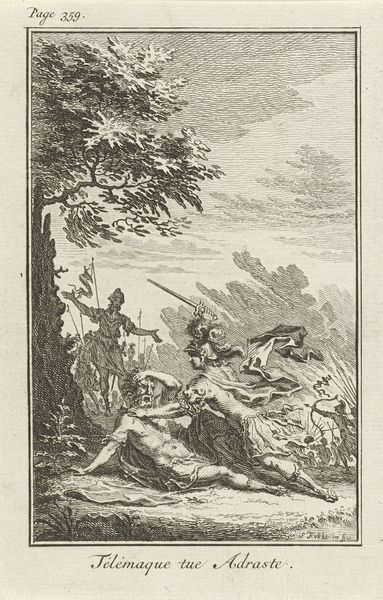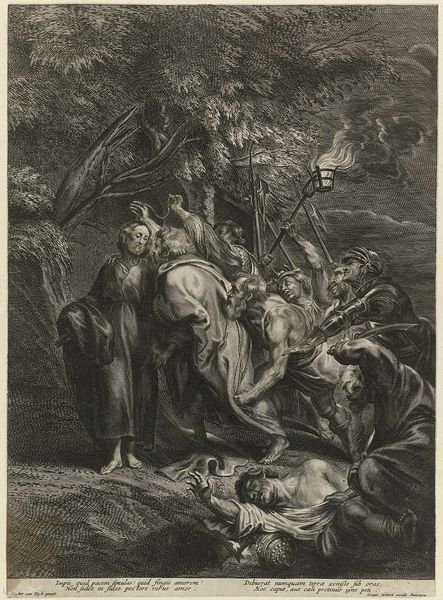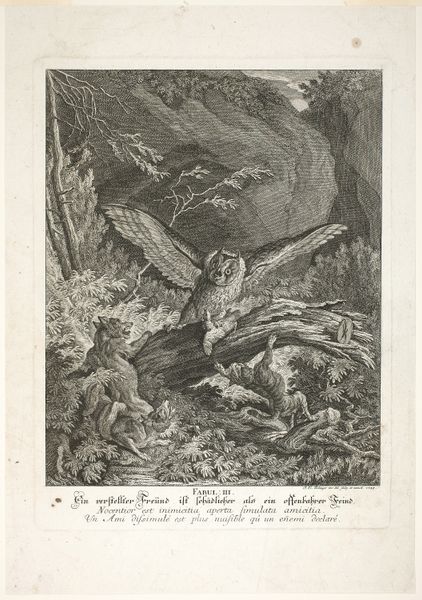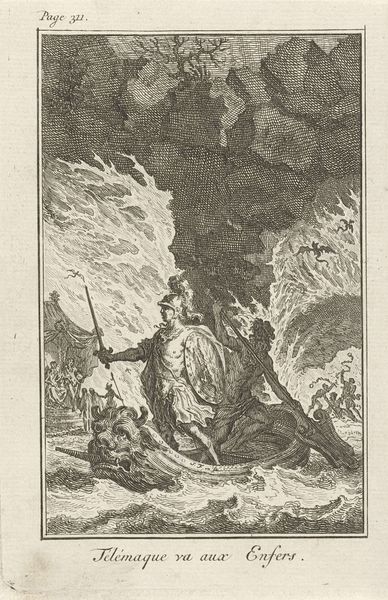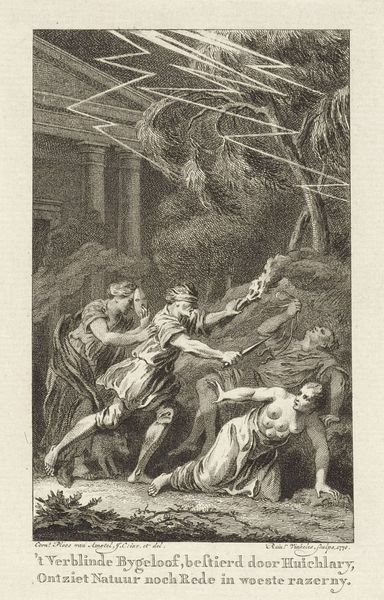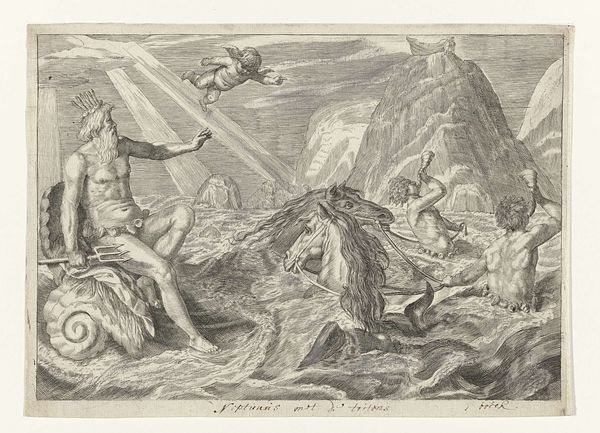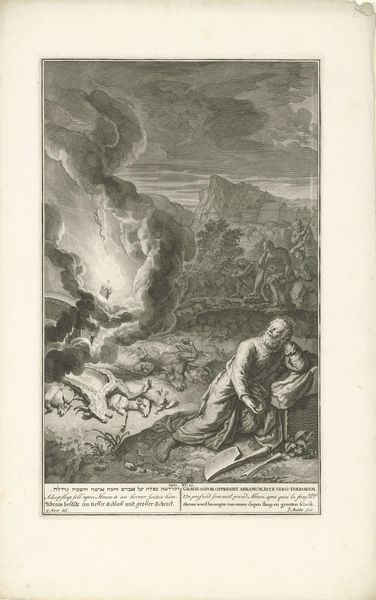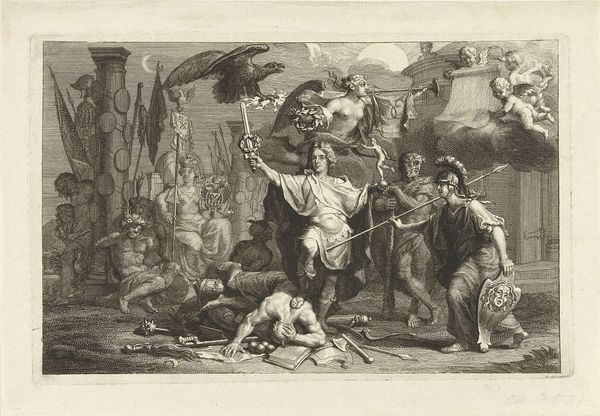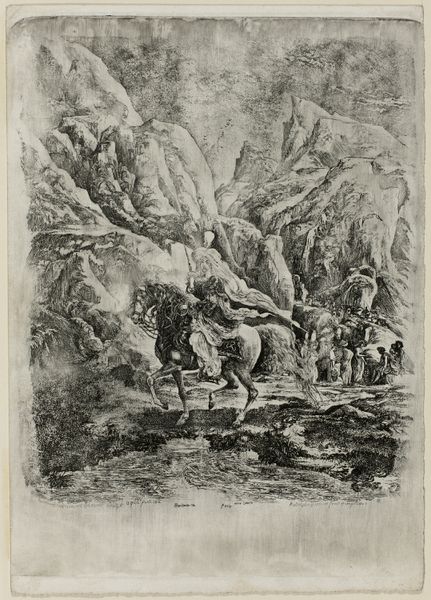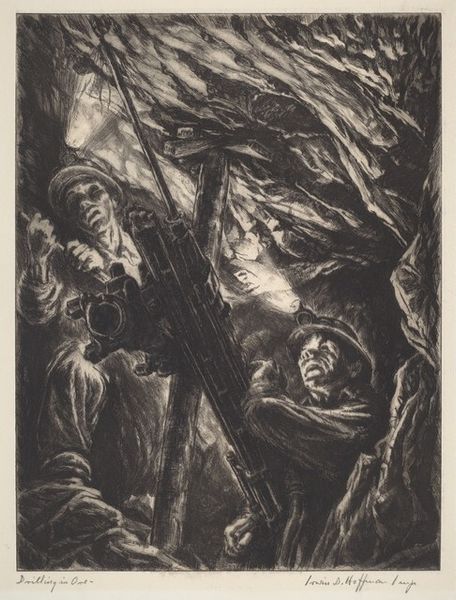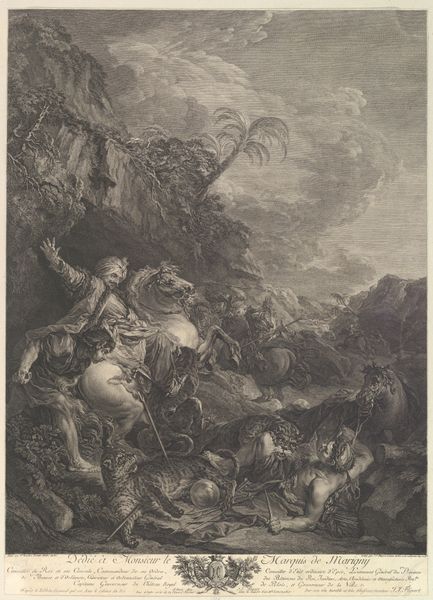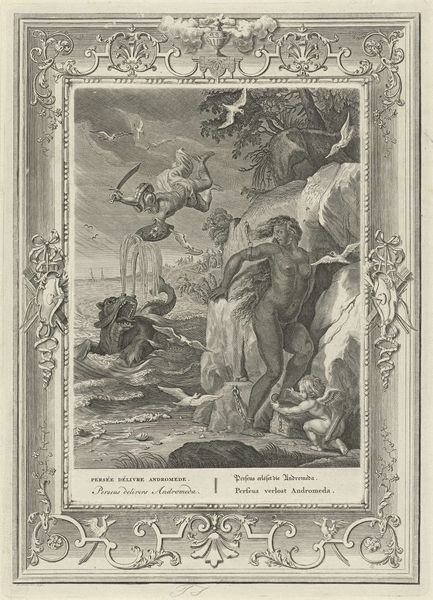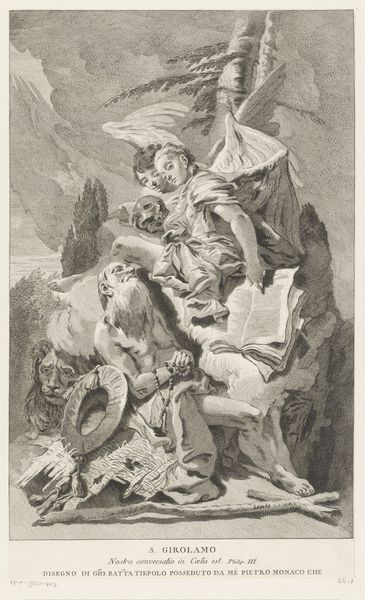
engraving
#
narrative-art
#
baroque
#
greek-and-roman-art
#
old engraving style
#
landscape
#
figuration
#
line
#
history-painting
#
engraving
Dimensions: height 180 mm, width 118 mm
Copyright: Rijks Museum: Open Domain
Franz Ertinger created this print of Glaucus and Scylla in the 17th century, likely using etching techniques. It depicts a scene from Ovid's Metamorphoses, a popular source for artists at the time. Prints like this were often made for a growing market of collectors, especially in the Netherlands, where the art market was becoming more accessible to the middle class. The image draws on classical mythology, which was seen as a source of wisdom, beauty, and moral lessons. However, the story of Glaucus and Scylla, in which a nymph is turned into a monster by a jealous sorceress, also reflects anxieties about female power and transformation in a patriarchal society. We can learn more about the social and cultural values of the time through close examination of the image. The availability of sources like Ovid, the growth of the art market, and the social attitudes toward women all played a role in shaping its production and reception.
Comments
No comments
Be the first to comment and join the conversation on the ultimate creative platform.
